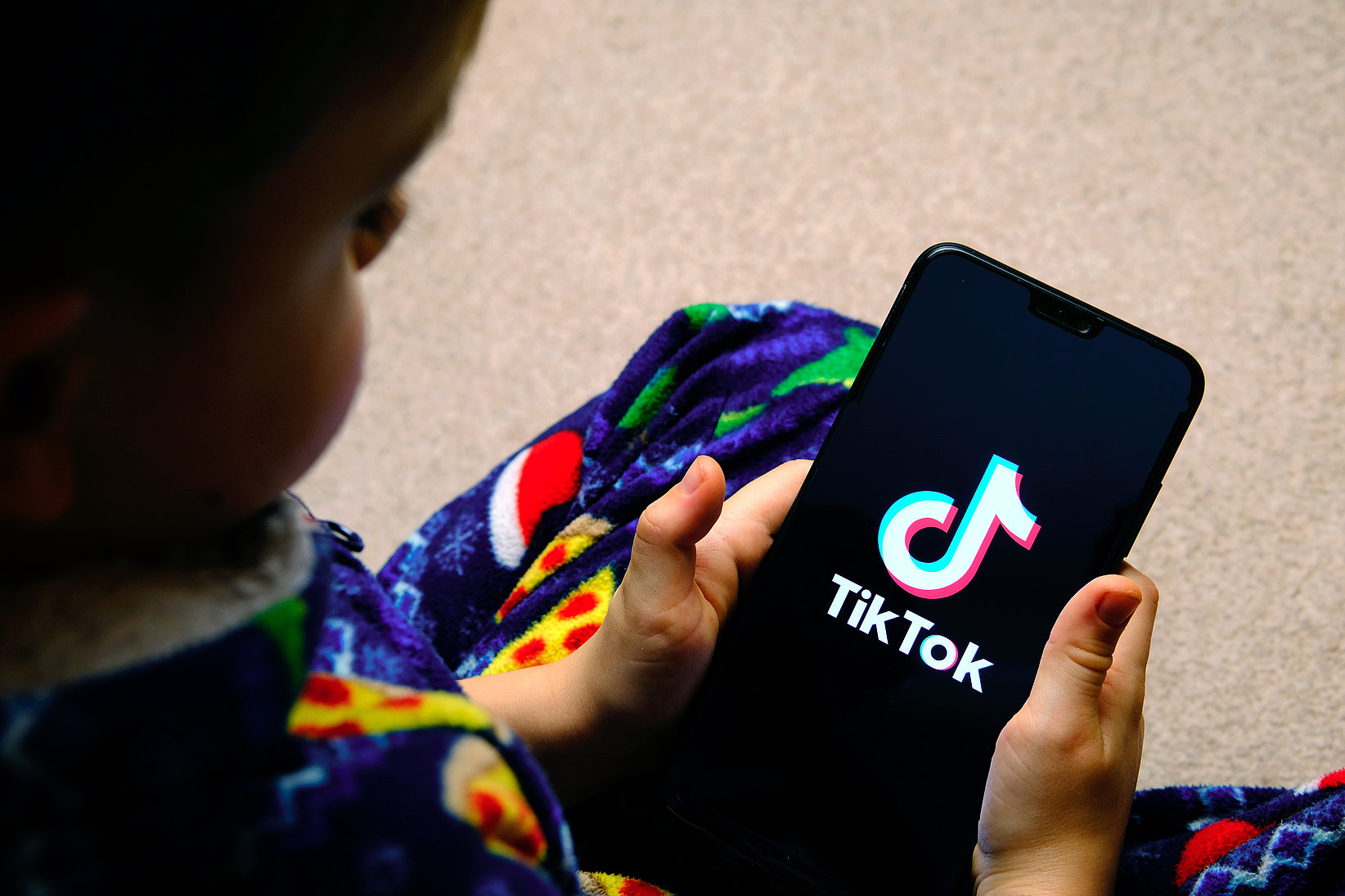
Children on Social Media App ‘TikTok’ and Implications for Experiences of Adulthood
The Clock is Ticking on Childhood

The Clock is Ticking on Childhood: Children on Social Media App ‘TikTok’ and Implications for Experiences of Adulthood
TikTok, the social media platform first released in 2016, has steadily grown in popularity amongst young people, particularly due to its short-form content and collaborative nature, and presents a new environment in which to conduct research. Off the back of other social media platforms such as Musical.ly, TikTok is popular amongst a younger population because content creation is easily accessible: the reactionary features such as ‘duet’ or ‘stitch’ allow users to build on each other’s content, and a 15 second video can be filmed, edited and publicly posted in less than a minute. This low-skilled and easily accessed form of online engagement presents a unique research opportunity; to better understand the transition period between childhood and adulthood, especially now that social media features heavily in the everyday life experiences of young people. Insights may be obtained regarding how the app grants young people greater exposure to adult life in a controlled and sheltered, but still attractive, environment through sheer quantity and diversity of content featured.
Previous research has been conducted on the online lives of tweens and teenagers in PC based websites such as Club Penguin, Second Life and Whyville; children were able to play at adulthood in an online imitation of society, where users had to create avatars, complete tasks and earn coins to succeed. However, these virtual realities have been replaced by a greater prevalence of social media platforms and apps with the increasing popularity of handheld and mobile devices. This means that research must be conducted so as to understand how tweens and teenagers now play at adulthood within new online platforms, namely mobile apps and social media platforms such as TikTok.
One groundbreaking feature of the TikTok app was its trademark ‘For You Page’, or FYP. The FYP is a collection of short-form videos suggested to the user based on their previous engagement with content on the app, sometimes affectionately referred to as ‘my algorithm’, that becomes tailored to each user's preferences and interests. While some FYPs are very similar and highly rated content can grace very many different FYPs, there is no algorithm that is exactly alike. This way, users of the TikTok app are each presented with a highly unique collection of content specifically curated to best entertain and satisfy their particular cravings every time they use the app. In a way, this makes TikTok highly engaging, and it is not uncommon for long spans of time to go by before I find myself in a ‘rabbit hole’ of a particular topic. On the other hand, however, there is always something interesting to learn, something to laugh about, or something to aspire towards.
Through the programming of the algorithm, very many new and exciting things can come across one’s FYP. Although I am no IT specialist, I can surmise that through the process of analysing a user's patterns of engagement, their ‘liking’, ‘sharing’ and ‘searching’ practices, the software is capable of suggesting videos that you are most likely to be interested in. This is how the FYP becomes customised to each user on the TikTok app, and how it may also be littered with content that does not align directly with your tastes, but falls adjacent to it. This is how I stumbled upon my current music obsession; through the process of ‘liking’ and engaging in videos from other content creators and artists’ music, Scottish Fish came across my FYP and I downloaded their album almost immediately. The same can be said for other TikTok users. This unique feature allows people to explore new interests, or deepen their understanding of things that they find intriguing, through the process of customising what content they see right off the bat when opening the app and creating an ever expanding web across all sorts of topics and activities.
This web of interconnectedness between content is enabled by the ease of which users may contribute to already existing content, or create their own. The low-skilled nature and ease of access to videography and content production, as well as the collaborative features ‘duet’ and ‘stitch’, allow users to produce and share content with very little investment or risk taken on during the process. This makes the platform of particular interest to the group in society with least access to funds or skill: tweens! Tweens and teenagers represent a large proportion of TikTok users; the fast pace of millions of short-form video content, cheap and easy to produce and spanning a great many areas of interest, snag the attention of younger people and allow them to engage alongside it as well. In this way, users can interact with each other in a productive manner, where content is produced from the coming together of strangers and friends alike.
A sense of shared community originates from the collaborative and over-saturated nature of the FYP, which is curated, maintained and reproduced by the users themselves. Each individual will have a different experience of the exact same software and programming, while still existing as an identity in the online arena that is the TikTok app. What I mean by this is, that while the app does not change, each user's day-to-day experience of it is different and dependent on who they are as a person. Interests, hobbies, attitudes of a user all contribute to what type of content they see. Therefore, each person is capable of creating an online persona out of the content that they engage with; I’m a nerdy ‘gym-rat’ because I get recommended fitness tips and ‘GRWM for the gym’ videos immediately after a compilation of clips from my favourite podcasted D&D campaign, Tales From The Stinky Dragon.
This type of FYP curation is very interesting considering the impressionable age of many users. Tweens and teenagers alike are within an in-between stage, where they are no longer children but not yet adults, and are still trying to figure out how they fit into wider society. One way this can be done is by figuring out what sorts of things you like, or that you're interested in. Here, the FYP offers up a plethora of video content relating to all sorts of hobbies and interests, in an easily accessible and low investment manner that attracts young people. Young people who are not yet certain of themselves are capable of ‘practising identity’; trying on many different hats, if you will. I once thought I could be a seamstress in my TikTok journey, but after a £10 investment in embroidery hoop, cloth and thread, I decided it wasn’t for me. Through this process of trial and error, young people can come to find things that contribute to their sense of identity, and they can strengthen that sense through the continual practising of it; finding a hat that suits them, and wearing it everywhere they go. I’m thinking of the beret you wore as a 10 year old, thinking it was the height of fashion, and declared to never take off. This type of practising can be done through consumption or creation on the TikTok app.
Content consumption is easy enough: millions of videos are released every hour from across the world, spanning many different topics for different intended audiences and purposes. This provides users of the app a seemingly endless well of content that they can explore: get exposed to new hobbies, find the best places to eat in their city, learn about environmental and political issues, or watch a music video from across the globe, all at the fingertips of TikTok users. For tweens and teenagers, this presents very many different things that they might not have heard of before, and may go on to show interest in. Content creation is a step up from consumption, but is no great feat to accomplish. As mentioned, the unique features of the TikTok app make content production and distribution easier than ever before; everything necessary to shoot, edit and share content is available on the app upon download. Content creation allows young people to engage in the online community found on TikTok, particularly with already established friends, as they actively contribute to its maintenance and reproduction. Friends will make dance challenge videos together, or make life update videos for each other, and share them privately without publishing them to the wider audience. In this way, tweens and teenagers can try on as many different hats as they like and gauge their friends’ reactions, informing their decision to keep it on or swap it out for something new, practising and stabilising their sense of identity.
In a supervised and controlled environment - parental guidance is possible through app settings, and age restrictions automatically apply to below 16 year olds - exploration of young adult life is possible on the TikTok app. Through these sorts of interactive engagement practices online, especially with the vast diversity offered by TikTok, tweens and teenagers are exposed to content they might not otherwise have the access to. They may experience small examples of greater social life from the safety of their homes and familiar friendship groups in order to diversely inform the process of identity development: these many different hats are express delivered to your door, and you’re playing dress-up with your friends in the living room (I hope my hat analogy is coming across nicely). This phenomenon of tweens - who have come of age with the iPhone - existing within online communities during an impressionable stage of life is very interesting, as it has not happened before and presents many opportunities for marketing and research agencies to better understand their experiences.
While young people on the internet is not everyones’ ideal, it has become a fact of life and does not have to be harmful to the underdeveloped brain. Instead, these online communities and spheres of content circulation can be beneficial to young people, as they present diverse and varying opinions that - with some discussion and adult guidance - can be negotiated to better understand the world around them and what it might be like to be an adult. With correct management of time and exposure for young users by built-in age restrictions on the TikTok app, holding other community members responsible to abide by TikTok content guidelines and encouraging parents to discuss the dangers of the internet with their children, the online community currently existing within the TikTok app may be nurtured to remain safe and beneficial for all audiences. Therefore, the unique formatting and programming of the short-form video app TikTok has the potential to aid young people in the process of identity development while transitioning from childhood into adulthood, with proper management and support from friends and family, content creators and TikTok management.


